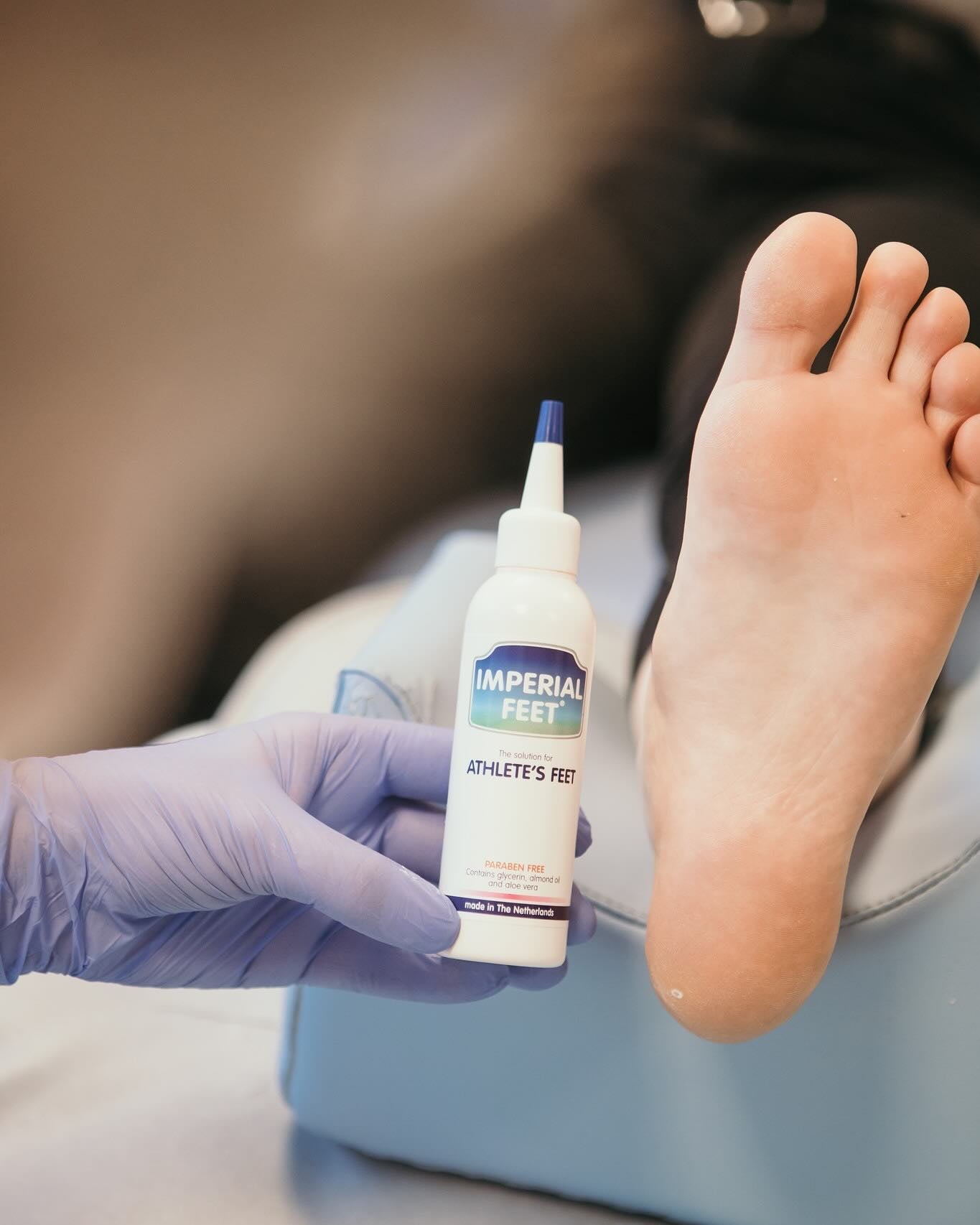
How Do You Know When Athlete’s Foot Is Gone? A Complete Guide to Healing and Prevention
Athlete’s foot (also known as tinea pedis) is a common fungal infection that affects millions of people worldwide. It’s itchy, uncomfortable, and often stubborn — but with the right treatment, it’s usually easy to clear up.
The real question is: how do you know when athlete’s foot is truly gone?
Since lingering fungus can cause the infection to come back, knowing the signs of complete healing is key to keeping your feet healthy. In this guide, we’ll cover:
-
The common signs that athlete’s foot is healing
-
How to tell if it’s not gone yet
-
Tips to make sure it doesn’t come back
-
Why using the right products — like Imperial Feet Athlete’s Foot Solution — can make all the difference
What Is Athlete’s Foot?
Athlete’s foot is a contagious fungal infection caused by dermatophytes — fungi that thrive in warm, moist environments like sweaty shoes, locker rooms, and public showers.
It typically appears between the toes or on the soles of the feet and can spread if untreated.
Common symptoms include:
-
Itching, burning, or stinging between the toes
-
Red, scaly, or peeling skin
-
Cracked or blistered skin
-
Foul odor from the affected area
Treatments usually include antifungal creams, sprays, or solutions, but consistent care and hygiene are crucial to fully eliminate the fungus.
Signs Athlete’s Foot Is Healing
If you’re treating your athlete’s foot, you might notice improvements within a few days. But how do you know when it’s truly gone? Look for these signs:
1. Itching and Burning Stop
The most noticeable symptom — that relentless itch — is usually the first to fade. When the burning, itching, or tingling sensation disappears completely, it’s a good indicator that the fungus is under control.
2. Skin Returns to a Healthy Color
During infection, the skin often appears red, inflamed, or darker than usual. As healing occurs, the skin should gradually return to its normal tone without any visible irritation.
3. Peeling and Flaking Cease
Fungal infections often cause dry, peeling skin. As the treatment works, new, smooth skin will replace the damaged areas — and the peeling should stop.
4. No New Cracks or Blisters Form
Cracks, blisters, or sores indicate active infection. If your skin is healing without new lesions appearing, the fungus is likely gone or almost gone.
5. No Odor or Moisture
Athlete’s foot often produces a musty or unpleasant smell. When the infection clears, so does the odor — and the skin should feel dry, not damp or slimy.
Speed Up Healing With Imperial Feet Athlete’s Foot Solution
For faster and more effective results, many people turn to targeted treatments like the Imperial Feet Athlete’s Foot Solution
Formulated with natural antifungal ingredients and nourishing oils, this solution not only combats the fungus at its source but also soothes irritation, reduces redness, and restores skin health — often within days.
How to use it:
-
Wash and thoroughly dry your feet, especially between the toes.
-
Apply Imperial Feet Athlete’s Foot Solution twice daily to the affected area.
-
Continue use for at least two weeks after symptoms disappear to ensure the fungus is fully gone.
Its lightweight, non-greasy formula makes it ideal for daily use and helps prevent reinfection.
Signs Athlete’s Foot Is Not Gone Yet
Sometimes, symptoms may appear to improve before the infection is fully cleared. Watch out for these warning signs that the fungus is still present:
-
Persistent itching or burning
-
New redness or irritation
-
Flaky skin that doesn’t stop after 2–3 weeks
-
Recurring blisters or cracks
-
It spreads to toenails (thick, yellow, or crumbly nails)
If any of these occur, continue treatment or consult a healthcare professional. Stopping treatment too soon is one of the most common reasons athlete’s foot returns.
Don’t Forget Your Shoes — The Hidden Source of Reinfection
Even if your skin looks healthy, athlete’s foot fungus can linger in your shoes and socks. Without proper disinfection, you risk reinfection the moment you slip them back on.
This is where Imperial Feet Shoe Disinfectant comes in.
It’s specially formulated to kill fungus, bacteria, and odor-causing microbes inside your footwear — creating a clean environment that supports healing and prevents recurrence.
Pro tip: Spray your shoes once or twice a week while treating your feet, and continue monthly as a preventive measure.
When to See a Doctor
Most cases of athlete’s foot clear up within 2–4 weeks with over-the-counter treatments and proper hygiene. However, seek medical help if:
-
Symptoms persist beyond 4 weeks
-
The infection spreads to your toenails
-
You develop severe pain, swelling, or pus
-
You have diabetes or a weakened immune system
A doctor can prescribe stronger topical or oral antifungal medications if necessary.
Final Thoughts
Knowing when athlete’s foot is gone isn’t just about what you see — it’s about what you don’t feel. When itching, redness, and peeling stop completely, and your skin looks and feels healthy, it’s a good sign the infection is behind you.
But true success means treating both your skin and your shoes.
Using the Imperial Feet Athlete’s Foot Solution ensures the fungus is fully eliminated, while the Imperial Feet Shoe Disinfectant keeps your footwear fungus-free — so you can step forward confidently without fear of reinfection.










